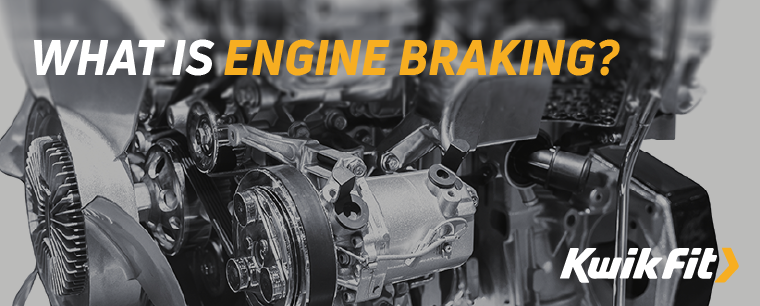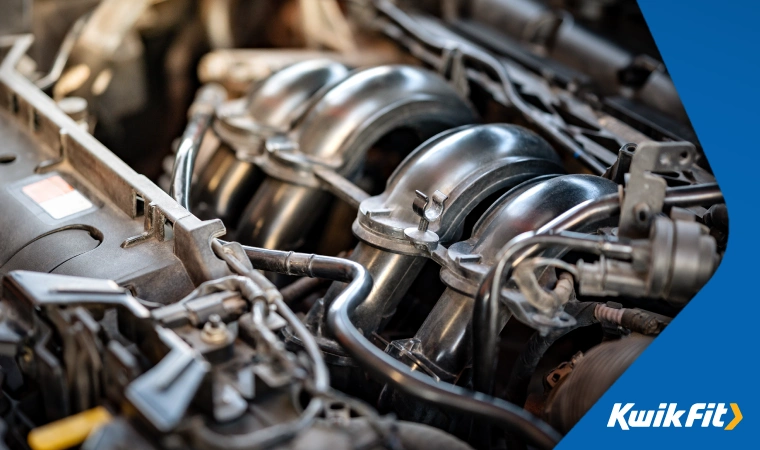What is Engine Braking?
Jack Dreyer | Wednesday 24th July 2024 10:00am

Youíll notice when driving that if you take your foot off the accelerator pedal, your car starts slowing down even without braking. If you shift down the gears, you will slow down even more. This is engine braking, but, be careful - slowing down too soon when the revs are still high will cause your engine to make a loud, uncomfortable noise.
Itís also important to note that engine braking will only work when your car is in gear, and not when the clutch is engaged.
If you need some guidance on how to undertake engine braking, donít worry - weíve got you covered. In this blog, we explain how it works, what the benefits are, and when not to use it.
How does engine braking work
When you disengage the accelerator pedal, you close the air intake valve and create a vacuum which restricts air flow to the cylinders. This vacuum, by restricting airflow, provides a lot of resistance to the pistons, which in turn slows down the engine.
How can you use your engine as a brake
Engine braking is a fairly simple process, and youíve probably done it before, if unintentionally.
Imagine there is a traffic light up ahead of you and you are travelling at 40mph. If you want to slow down gradually, stop accelerating and switch down in the gears one at a time.
Be sure to match your revs as you downshift, slowly and smoothly removing your foot from the clutch each time - this will save you the uncomfortable jolt that happens when jumping down the gears too quickly.
Engine braking wonít bring you to a full stop, so youíll want to then use the clutch and brake to stop fully. This way, you will have limited wear on your brakes but will come safely to a stop!

Benefits of Engine Braking
There are a few benefits to using engine braking, particularly if youíre looking to preserve your brake pads for as long as possible.
Letís take a look at the main benefits below:
Wear and Tear
Caliper brakes and drum brakes work by using friction, sso as you might imagine, less strain on your braking components translates to less wear and tear.
But this does not mean that you should always rely on engine braking. Instead, you should use a mix of this and traditional braking.
Downhill Driving
Engine braking can be helpful for driving downhill. When driving downhill, staying in a lower gear allows you to maintain a safe speed, whereas going up in the gears will mean you speed up rather quickly - without even engaging the accelerator - which could potentially be dangerous.
Driving In Icy Conditions
You might also want to consider using engine braking in icy conditions. Slamming on the brakes while driving on ice physically slows your wheels, which increases the risk of skidding. However, engine braking allows for a more controlled slow-down via the engine.
Brake Failure
Engine braking can also be used in the (worst case) scenario that your manual brakes fail. In this case, you would have to do your best not to panic and utilise these steps for engine braking. Remember: donít keep your foot on the clutch.
When not to use engine braking
In some cases, engine braking might unnecessarily take your focus away from the steering wheel and road ahead as you use your hand to change gears.
Keep in mind that you donít have brake lights when engine braking. You largely wonít need to worry about this, as youíll be slowing down gradually anyway. But this is partially why you shouldnít use 1st gear to engine brake from high speeds - itíll slow you down harshly with no warning to other drivers. This will also put strain on your gears and synchromesh.
Book a free brake check at Kwik Fit
Overall, engine braking can be a safe way to come to a stop and can save you some wear and tear to your braking components, but should not be thought of as a replacement for using the brake pedal.
If youíre concerned about the performance of your brakes or you think they may need replacing, get in touch with our trusted team at your local Kwik Fit centre to book a free brake check. Our expert brake technicians will complete a no-obligation inspection and provide you with a written report if any work or repairs are required.
In the meantime, you can keep up-to-date with motoring news and trends by checking out our blog.
Any facts, figures and prices shown in our blog articles are correct at time of publication.
Featured Articles
Is it Illegal to Drive With One Headlight?
Saturday 19th July 2025
Wondering if itís illegal to drive with one headlight? Learn about the safety risks and penalties of illegal blown bulbs and why you should fix them promptly.
Air Con in EVs & Hybrids: Experts Answer Your Questions
Monday 30th June 2025
Does air con drain EV batteries? Can you use the air con while charging an electric car? Find out the answers to these questions & more from Kwik Fitís experts.
Why Is Your Car Making a Noise? Fixes & Tips
Friday 13th June 2025
When your car starts making unexpected noises, it can certainly be quite disconcerting; it may be nothing to worry about, but hereís what you need to know.









